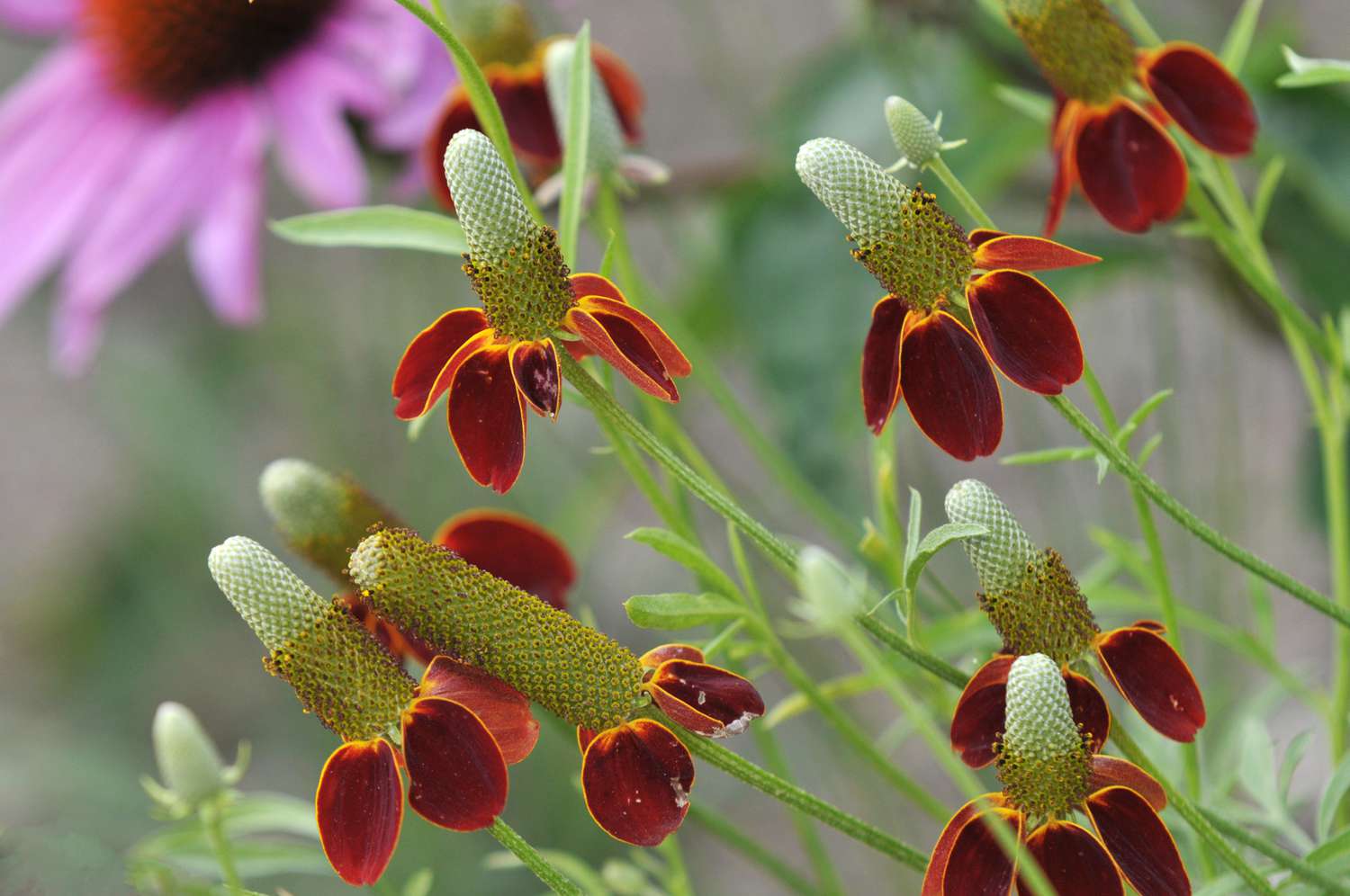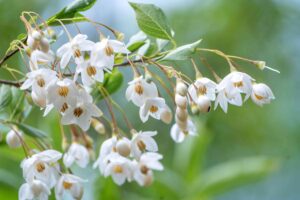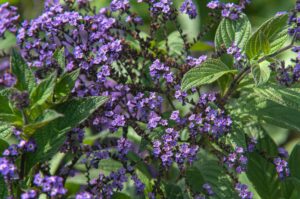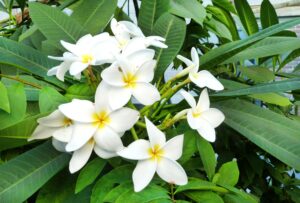How to Grow and Care for Mexican Hat Flower
Mexican Hat Flower (Ratibida columnifera), also known as Prairie Coneflower or Upright Prairie Coneflower, is a charming native wildflower that brings a touch of southwestern flair to any garden. With its distinctive sombrero-shaped blooms featuring drooping petals and a tall central cone, these drought-tolerant perennials offer both visual interest and ecological benefits. This comprehensive guide will walk you through everything you need to know about growing and maintaining these delightful flowers in your landscape.
What is Mexican Hat Flower?
Native to the prairies and meadows of North America, Mexican Hat Flowers get their name from their unique appearance that resembles a Mexican sombrero. The central cone rises up like the crown of a hat, while the petals droop down like the brim. These hardy perennials typically bloom from early summer through fall, offering a long season of visual interest in your garden.
According to the USDA Plants Database, Mexican Hat Flowers are indigenous to much of the central and western United States, making them an excellent choice for native plant gardens and xeriscaping projects across the country.
Benefits of Growing Mexican Hat Flowers
Before diving into cultivation techniques, let’s explore why you might want to add these distinctive flowers to your landscape:
- Drought tolerance: Once established, Mexican Hat Plants require minimal watering, making them perfect for water-wise gardens.
- Wildlife attraction: They serve as important nectar sources for bees, butterflies, and other pollinators.
- Low maintenance: These resilient natives need little care once established.
- Extended blooming period: Enjoy colorful blooms from June through September.
- Distinctive appearance: Their unique shape adds visual interest to any garden design.
- Native plant benefits: As indigenous plants, they support local ecosystems and require fewer resources than non-native alternatives.
Growing Conditions for Mexican Hat Flowers

Climate and Hardiness
Mexican Hat Flowers are hardy in USDA zones 3-9, making them suitable for most of the continental United States. They thrive in the hot, dry conditions of the American Southwest and Great Plains but can adapt to other regions as well. These flowers prefer full sun exposure but can tolerate partial shade, especially in hotter climates.
Soil Requirements
One of the greatest advantages of Mexican Hat Flowers is their adaptability to different soil conditions. Here’s what you need to know about soil requirements:
| Soil Factor | Ideal Condition | Tolerance Range | Notes |
|---|---|---|---|
| Soil pH | 6.0-7.5 (Slightly acidic to neutral) | 5.5-8.0 | Adaptable to many soil pH levels |
| Soil Type | Well-draining loam | Sandy to clay loam | Avoids waterlogged conditions |
| Fertility | Low to moderate | Can thrive in poor soils | No need for rich soil amendments |
| Moisture | Dry to medium | Tolerates drought once established | Avoid consistently wet soils |
| Compaction | Low compaction | Moderate tolerance to compaction | Prefers loose, aerated soil |
The key takeaway regarding soil is that Mexican Hat Flowers prefer well-draining conditions and don’t require fertile soil. In fact, overly rich soil can lead to excessive foliage growth at the expense of flowering.
Planting Mexican Hat Flowers
Whether you’re starting from seed or transplanting nursery plants, proper planting techniques are crucial for success with Mexican Hat Flowers.
Starting from Seed
Mexican Hat Flowers are relatively easy to grow from seed, and this method is often the most economical approach:
- Timing: Sow seeds in late fall for natural cold stratification or in early spring after the last frost.
- Preparation: For spring planting, cold stratify seeds by refrigerating them in slightly moist sand for 30 days.
- Planting depth: Sow seeds approximately 1/4 inch deep.
- Spacing: Plant seeds 12-18 inches apart, or broadcast them and thin seedlings later.
- Germination: Keep soil consistently moist until germination occurs, typically within 14-21 days.
- Thinning: Once seedlings reach 2-3 inches tall, thin them to 12-18 inches apart.
Transplanting
If you’ve purchased Mexican Hat plants from a nursery or divided existing plants:
- Timing: Plant in spring after the threat of frost has passed or in early fall.
- Spacing: Place plants 12-18 inches apart to allow adequate air circulation.
- Digging: Create a hole twice as wide as the root ball but no deeper.
- Planting: Position the plant at the same depth it was growing previously.
- Watering: Water thoroughly after planting to help establish the root system.
Care and Maintenance
One of the most appealing aspects of Mexican Hat Flowers is their low-maintenance nature. Here’s how to keep your plants thriving:
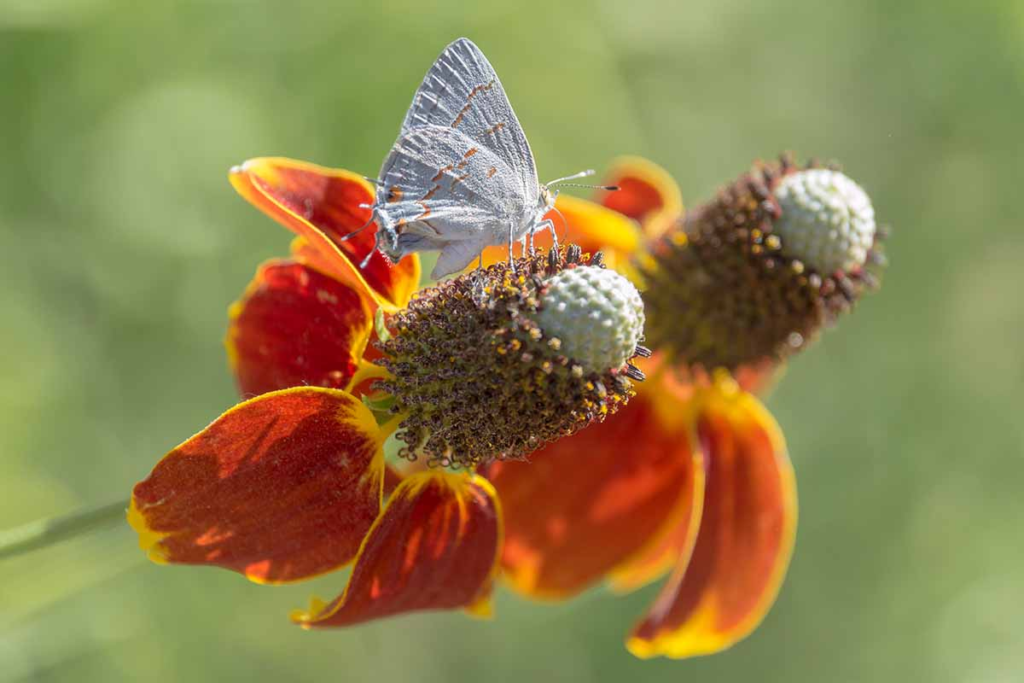
Watering Requirements
Mexican Hat Flowers are drought-tolerant once established, but proper watering during their establishment period is essential:
- First year: Water regularly when the top inch of soil feels dry.
- Established plants: Water only during extended drought periods (2+ weeks without rain).
- Watering technique: When watering, do so deeply but infrequently to encourage deep root growth.
- Overwatering signs: Yellowing leaves or stem rot indicate too much moisture.
Fertilization
These prairie natives evolved in nutrient-poor soils and actually perform better without rich fertilization:
- Established gardens: No supplemental fertilizer needed.
- New plantings: A light application of balanced, slow-release fertilizer in the first season can help establishment.
- Warning: Excessive fertilization leads to leggy growth and fewer flowers.
Pruning and Deadheading
Regular maintenance keeps your Mexican Hat Flowers looking their best:
- Deadheading: Remove spent flowers to encourage continued blooming.
- Mid-season trimming: Cut back by one-third in mid-summer if plants become leggy.
- Fall cleanup: Leave seed heads for winter interest and bird food.
- Spring cleanup: Cut back dead foliage in early spring before new growth emerges.
Pest and Disease Management
Mexican Hat Flowers are relatively resistant to pests and diseases, but they can occasionally face challenges:
- Common pests: Aphids, leafhoppers, and Japanese beetles may appear but rarely cause significant damage.
- Disease concerns: Powdery mildew and leaf spot can occur in humid conditions or with overhead watering.
- Prevention: Ensure proper spacing for air circulation and avoid overhead watering.
- Treatment: Most issues can be managed with insecticidal soap or neem oil if necessary.
Dividing and Propagating
Mexican Hat Flowers will self-seed readily in the garden, but you can also divide established plants to create more:
- Timing: Divide plants in early spring or fall.
- Technique: Dig up the entire plant, separate the crown into sections with roots attached.
- Replanting: Plant divisions at the same depth as the original plant.
- Care: Water newly divided plants regularly until established.
Using Mexican Hat Flowers in the Landscape
These versatile native plants can serve multiple functions in your garden design:
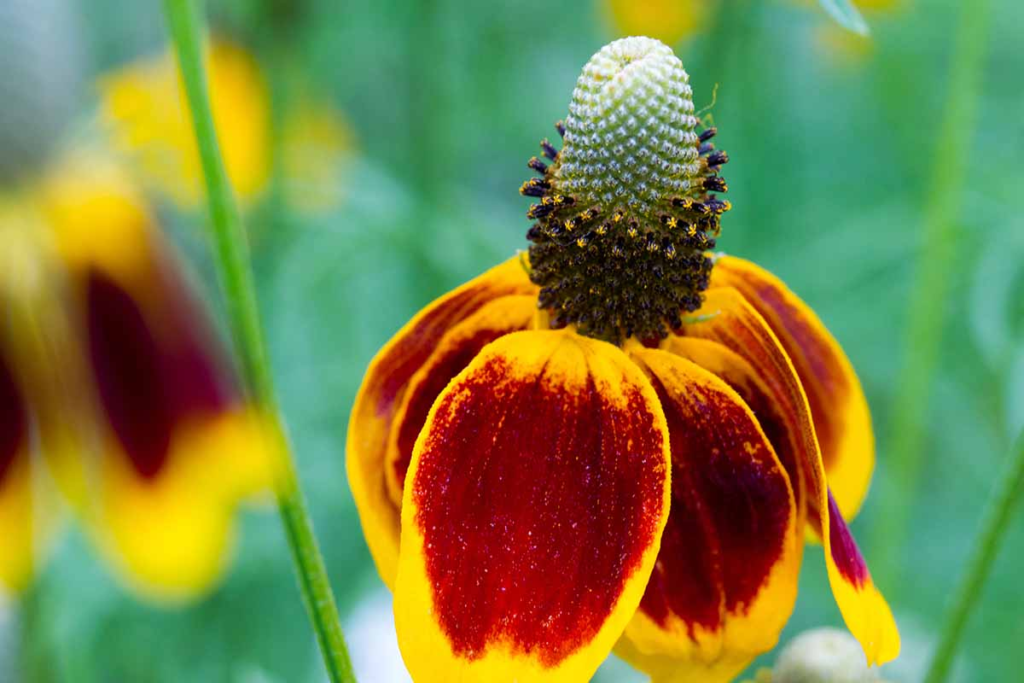
Garden Design Applications
Consider these ways to incorporate Mexican Hat Flowers into your landscape:
- Wildflower meadows: Plant en masse for a naturalistic prairie look.
- Border plantings: Use in the middle of perennial borders for vertical interest.
- Pollinator gardens: Include as part of a diverse pollinator habitat.
- Xeriscaping: Incorporate into low-water landscape designs.
- Cut flower gardens: The unique blooms make interesting additions to floral arrangements.
Companion Plants
Mexican Hat Flowers pair beautifully with other prairie natives and drought-tolerant perennials:
- Black-eyed Susans (Rudbeckia)
- Purple Coneflower (Echinacea purpurea)
- Butterfly Weed (Asclepias tuberosa)
- Little Bluestem Grass (Schizachyrium scoparium)
- Blanket Flower (Gaillardia)
- Prairie Dropseed (Sporobolus heterolepis)
Seasonal Interest
Mexican Hat Flowers offer multiple seasons of interest in your garden:
- Spring: Fresh green foliage emerges.
- Summer: Primary blooming period with distinctive sombrero-shaped flowers.
- Fall: Late blooms continue as foliage may develop reddish tints.
- Winter: Seed heads provide food for birds and visual interest in snow.
Common Varieties and Cultivars
While the species plant is widely available and adaptable, you might also encounter these varieties:
- ‘Red Midget’: Features reddish-maroon petals with a shorter growth habit.
- ‘Yellow Prairie Coneflower’: A variety with all-yellow petals rather than the typical red/yellow bicolor.
- ‘Chapeau’: Selected for its uniform habit and consistent flowering.
Harvesting and Using Mexican Hat Flowers
Beyond their ornamental value, Mexican Hat Flowers have practical applications:
Cut Flowers
- Harvest when flowers are fully open but fresh.
- Cut stems in the morning for best vase life.
- Remove foliage below the water line.
- Expect a vase life of 5-7 days.
Seed Collection
- Allow flower heads to dry completely on the plant.
- Harvest when the central cone turns dark brown or black.
- Hang seed heads upside down in a paper bag to catch falling seeds.
- Store dried seeds in a cool, dry place for up to 3 years.
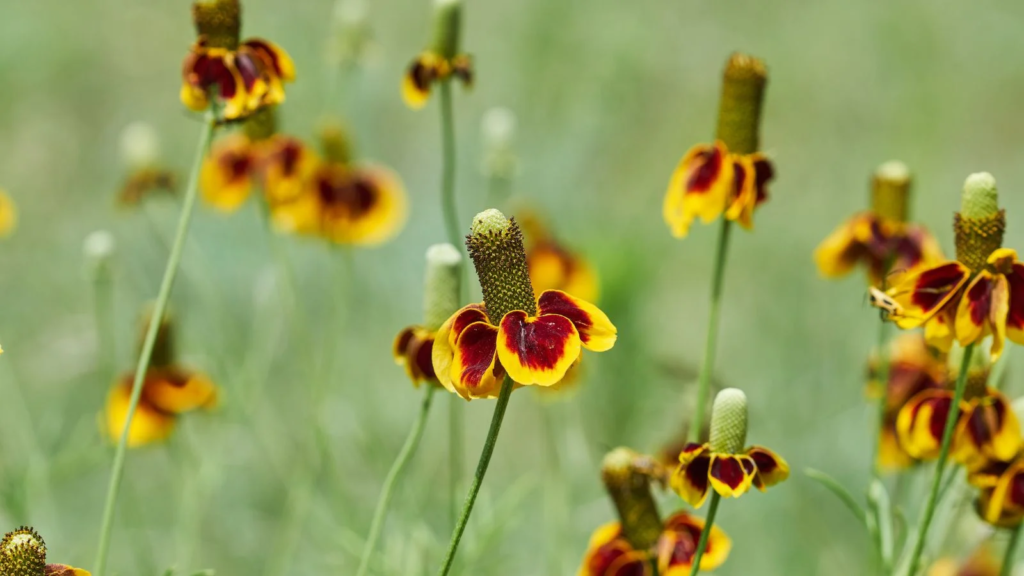
Troubleshooting Common Issues
Even these low-maintenance plants can sometimes encounter problems:
Leggy Growth
- Cause: Insufficient light or excessive fertility.
- Solution: Move to a sunnier location or reduce fertilization.
Few Blooms
- Cause: Too much shade or nitrogen-rich soil.
- Solution: Ensure plants receive at least 6 hours of direct sunlight daily.
Winter Survival Issues
- Cause: Poor drainage causing crown rot.
- Solution: Improve soil drainage or plant on a slight mound.
Conclusion
Mexican Hat Flowers offer a winning combination of distinctive beauty, drought tolerance, and ecological benefits. By following the guidelines in this article, you can successfully grow and enjoy these charming native perennials in your landscape. Whether you’re creating a water-wise garden, supporting local pollinators, or simply adding unique visual interest to your yard, Mexican Hat Flowers deserve a place in your gardening repertoire.
Remember that as native plants, they not only require less maintenance and resources than many ornamentals but also provide important habitat and food sources for local wildlife. By incorporating these indigenous flowers into your landscape, you’re creating a garden that’s both beautiful and beneficial to the environment.
